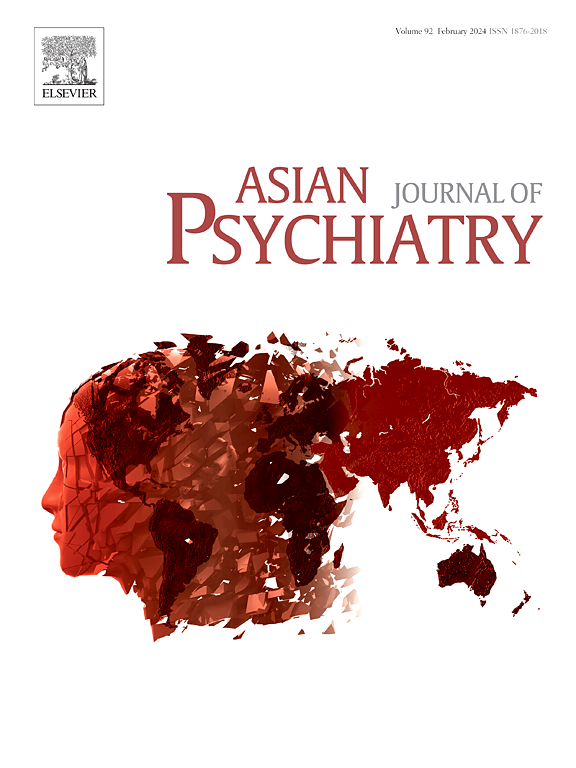Structural neuroimaging abnormality and neurocognitive deficit in the first-degree relatives of schizophrenia patients (FDR) compared to the first-episode patients with schizophrenia (FEP) and healthy controls
IF 3.8
4区 医学
Q1 PSYCHIATRY
引用次数: 0
Abstract
The existing evidence regarding structural neuroimaging alternations during the premorbid and prodromal stages of psychosis remains limited and inconsistent. Gaining a deeper insight into the morphological brain variations could potentially advance the early diagnosis of high-risk individuals for psychosis, thereby offering a clearer understanding of the underlying mechanisms that lead to the progression towards mental disorders, particularly schizophrenia. In our study, we conducted comprehensive face-to-face clinical interviews, psychiatric symptom assessments, and neurocognitive evaluation for 25 first-episode patients with schizophrenia (FEP), 35 first-degree relatives of schizophrenia patients (FDR), and 22 healthy controls (HC). We also collected structural magnetic resonance imaging (sMRI) data for all participants. The results demonstrated that the FEP group experienced the most severe clinical symptoms, the lowest global function, and the poorest neurocognitive function, followed by the FDR and HC groups. FEP group exhibited significant reductions in the surface area, cortical thickness, or volume of the right cuneus cortex, bilateral entorhinal cortex, left para-hippocampal gyrus, bilateral temporal pole, and right insula cortex compared to the FDR and HC groups. However, no significant difference in surface area, cortical thickness, and volume of all the regions of interest (ROIs) were found between the FDR group and HC group. To conclude, neurocognitive decline and gray matter reduction could serve as neuroimaging biomarkers for the onset and progression of psychosis. It is imperative to conduct further comprehensive researches to identify additional promising biomarkers, which will facilitate the early detection and intervention for individuals at risk of developing psychosis.
求助全文
约1分钟内获得全文
求助全文
来源期刊

Asian journal of psychiatry
Medicine-Psychiatry and Mental Health
CiteScore
12.70
自引率
5.30%
发文量
297
审稿时长
35 days
期刊介绍:
The Asian Journal of Psychiatry serves as a comprehensive resource for psychiatrists, mental health clinicians, neurologists, physicians, mental health students, and policymakers. Its goal is to facilitate the exchange of research findings and clinical practices between Asia and the global community. The journal focuses on psychiatric research relevant to Asia, covering preclinical, clinical, service system, and policy development topics. It also highlights the socio-cultural diversity of the region in relation to mental health.
 求助内容:
求助内容: 应助结果提醒方式:
应助结果提醒方式:


